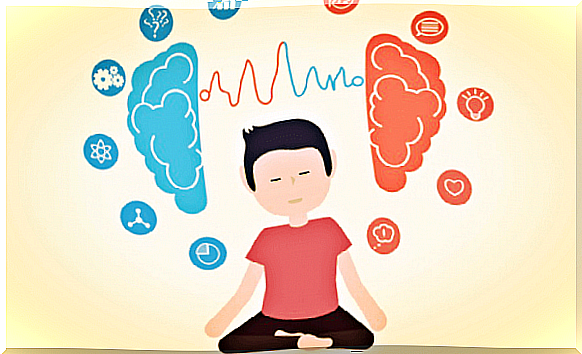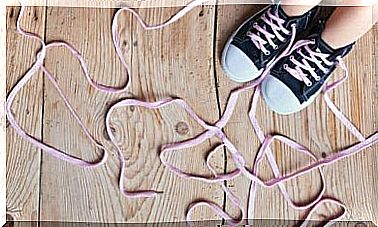Applying Mindfulness In Everyday Life

Start applying mindfulness in your daily life and you will be on your way to a better life. It is not always easy to make this ancient philosophy work in this modern age. But there are a lot of different strategies we can use: all we have to do is find the one that best suits our needs and our daily lives.
To be honest, most of us are drawn to mindfulness, not because it’s popular right now, not because someone told us about it, or because we see it in every book, magazine, and self-help article these days. It interests us and it seduces us because it invites us to see the world from a livelier, higher but closer perspective. It is a wake-up call and above all useful.
But our days bring us down with our obligations, rigid schedules and busy outlook on life. We cannot generate more hours in the day. We can’t seem to find the time we don’t have. And that is why we tell ourselves that meditation is not for us.
But we’re wrong. Mindfulness is more accessible than ever. Some simply start in their own home, guided by a book or even an online course. And there are those who can’t bear the thought of being quiet or who can’t function in a classroom setting with other people. Good news: we can meditate while we exercise, while we walk.
As you can see mindfulness is always there, it is within our reach…

Mindfulness in today’s busy world
Times change, but the roots of spirituality and the extraordinary legacy of mindfulness remain. In fact, it is needed now more than ever. Life is so complicated today… How can we learn to develop full consciousness? How can we learn to meditate, breathe and connect with the ‘here and now’?
- Rohan Gunatillake is an innovator who is revolutionizing the field of mindfulness in a very concrete way: by meditating in a dynamic way, thanks to new technologies or even through sports
- The author explains how we have changed. Today our needs are more intense, our world crazier and we have so many more ways of learning at our disposal: the internet and new technologies are bringing us closer to personal growth than ever before and even closer to the world of meditation
- Rohan Gunatillake calls it “urban meditation” because let’s face it: cities, work and the digital world are what defines most of us today. How can we squeeze out for a 10-day nature retreat to learn to meditate? If we can’t do this, and we probably can’t do this, luckily we have our own homes and those wonderful technologies that can teach us how to connect with reality…
The world is constantly changing and we are a part of it. But let’s not forget that mindfulness is also mobile. Let’s enjoy the present, in all its beautiful nuances, ups and downs, smells, tastes and sensations…

Ways to practice mindfulness in everyday life
As Daniel Goleman said in his day , attention is a muscle that we must exercise daily in order to become more aware of our surroundings, as well as what is happening inside us. But… how do we do this if we don’t have time? Can we really learn to meditate by going to an hour of class once a week?
Well, it’s possible, but some people go to these classes out of curiosity and stop after a few days because it wouldn’t work. They have trouble silencing their busy thoughts and finding the perfect inner balance with everything else in the background.
But it’s no coincidence that this more than 2,500-year-old Buddhist teachings made their way here in the West. This is because scientists like Dr. Kabat-Zin – in addition to others – understand that our demanding world moves quickly and we therefore need mindfulness. For starters, we have multiple options to choose from.

Mindfulness at work
Companies like Apple, Google, Nike and eBay have already practiced mindfulness in their workplace and on a daily basis. In order for this technique to be effective, we obviously need the right working environment and a suitable company policy, but in reality it is not that complicated for us to do it ourselves. Here are some guidelines:
- Go to work without rushing (probably won’t work the first week, but little by little you will do it
- Spend the first five minutes setting yourself up, planning the day, seeing what you’re going to do, how you’re feeling
- Breathe in and out deeply and be aware of the here and now of your body, your posture and every tension in your body
- Take a five minute break every 40 minutes to meditate, breathe and reconnect with yourself
Meditate while you walk
The ideal situation would be to give ourselves half an hour a day to take a short walk, not only to keep your body moving, but also to focus your mind on the basics of mindfulness. Here are some guidelines:
- Start walking at a normal pace. Slowly but surely find a pace for yourself that is relaxed, soothing and liberating. Some will walk at a slower pace and others may decide to walk a little faster
- It’s time to focus your attention on something. Visualize your mind as if it were a lantern shining light on one aspect and then on another: first your breathing, then the sensations of your feet as they touch the ground, then the wind touching your skin… Focus your attention on these aspects in a cyclical way, first one and then the other
- Eventually you will realize that you no longer need to focus your attention on everything that is going on in your body. After a few days, the light from your lantern will be so far-reaching that you will see everything at once

Mindfulness at home
If you are someone who does not feel comfortable in a classroom or does not like to listen to a personal facilitator, or if you do not have time to attend a class, remember that you can always book online books and courses have at your disposal. Thanks to these options, we can simply learn the fundamentals of mindfulness from home.
If you choose to do this, it is advisable to follow these suggestions:
- Choose a room, place and time of day that best suits the needs of your meditation. Remember you have to be really committed because it requires consistency
- Start with ten or fifteen minutes. As you get more and more used to it you can expand this
- Choose a technique that works for you
- Be patient and don’t expect immediate results. Mindfulness takes time and dedication
Times are changing and even with our busy and demanding lives we will always have this incredible technique at our fingertips. All we have to do is find the path that suits us best. Let’s try something new and take the first step towards a life of understanding and mindfulness.









